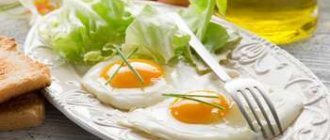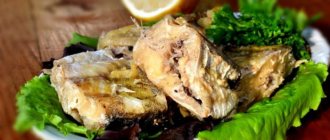Therefore, it is useful to add it to meat dishes, potatoes, pasta, pizza instead of delicious multi-ingredient ketchup.
A task force from the World Union Against Cancer examined large groups of people in Mediterranean countries. She came to the conclusion: men here get prostate cancer much less often - precisely because they eat spaghetti and pizza, popular in these parts, with tomato paste.
The preventive effect of tomato paste will be even more noticeable if you fry it in vegetable oil. Fry until the oil turns red. In this case, the total mass of the product is approximately halved: the water evaporates, and red tomato oil takes its place.
By the way, this is exactly what they do when preparing Ukrainian borscht. The Greeks and Spaniards add fried tomatoes to their national dishes. This means that people have long intuitively felt how to correctly extract the most valuable substance, probably without even knowing about its existence.
Tomatoes can be harmful for people with high stomach acidity and allergies, as tomatoes can cause allergies. Symptoms include hives, itching, skin rash, headache, abdominal pain, insomnia, hyperactivity, runny nose.
Conclusion: tomatoes are useful in any form, but fried, tomato oil is an excellent and affordable means of preventing cardiovascular diseases and cancer. The harm of tomatoes is mostly exaggerated and depends on the amount of consumption. published by econet. ru
PS And remember, just by changing your consumption, we are changing the world together! © econet
Join us on Facebook, VKontakte, Odnoklassniki
Mar-21-2013 Author: KoshkaS
Among the most common dishes that we prefer at breakfast is an omelet. This egg dish has a number of significant advantages, which explain its popularity. Omelette is easy to prepare, but at the same time tasty and healthy. Preparing an omelet is very easy - all you need to do is beat the eggs with salted milk, and pour the finished mixture into a frying pan with sunflower oil. To give the omelette an even richer taste, the ingredients include grated cheese, various meat products (for example, sausage, ham, etc.), as well as vegetables - onions, tomatoes, peppers, in general, whatever your imagination tells you.
Naturally, due to the popularity of the dish, many, especially adherents of a healthy diet and those who monitor their body weight, are interested in such simple questions as: what is the calorie content of an omelette, what are the benefits of an omelette and whether this dish has any dietary properties. First, about the beneficial properties:
Omelette, benefits and dietary properties:
Omelette has a number of useful properties. And among all the dishes made from eggs, omelet is probably the most healthy. This dish, if, of course, it was prepared correctly, retains all the beneficial properties of eggs.
Chicken eggs are a good source of biologically active components necessary for humans. Vitamins include vitamins A, B, B6, D and E, and folic acid (vitamin B9). The mineral composition is represented by iron, potassium, calcium, phosphorus, copper. They also contain essential amino acids and complete protein. At the same time, all of the listed substances are contained in the egg in an ideal balance, due to which they are absorbed by the body entirely.
One egg covers 25% of the daily amount of substances required by the body. Therefore, it is recommended to eat 2 eggs per day - in the form of an omelet and boiled.
But it is better not to eat raw eggs - they contain substances that interfere with the absorption of certain vitamins. Egg yolk contains vitamins B2, B12, A, D, lutein, iron, lecithin, and selenium in sufficient quantities. In addition, eggs can become a substitute for the best varieties of fish due to the presence of polyunsaturated fats and amino acids in them.
Recipe Omelette with tomato in a frying pan. Calorie, chemical composition and nutritional value.
Nutritional value and chemical composition of “Omelet with tomato in a frying pan.”
The table shows the nutritional content (calories, proteins, fats, carbohydrates, vitamins and minerals) per 100 grams of edible portion.
| Nutrient | Quantity | Norm** | % of the norm in 100 g | % of the norm in 100 kcal | 100% normal |
| Calorie content | 149.7 kcal | 1684 kcal | 8.9% | 5.9% | 1125 g |
| Squirrels | 7.3 g | 76 g | 9.6% | 6.4% | 1041 g |
| Fats | 12.4 g | 56 g | 22.1% | 14.8% | 452 g |
| Carbohydrates | 2.6 g | 219 g | 1.2% | 0.8% | 8423 g |
| Organic acids | 0.1 g | ~ | |||
| Alimentary fiber | 0.1 g | 20 g | 0.5% | 0.3% | 20000 g |
| Water | 73.4 g | 2273 g | 3.2% | 2.1% | 3097 g |
| Ash | 1.375 g | ~ | |||
| Vitamins | |||||
| Vitamin A, RE | 145.8 mcg | 900 mcg | 16.2% | 10.8% | 617 g |
| Retinol | 0.131 mg | ~ | |||
| beta carotene | 0.165 mg | 5 mg | 3.3% | 2.2% | 3030 g |
| Vitamin B1, thiamine | 0.055 mg | 1.5 mg | 3.7% | 2.5% | 2727 g |
| Vitamin B2, riboflavin | 0.268 mg | 1.8 mg | 14.9% | 10% | 672 g |
| Vitamin B4, choline | 125.79 mg | 500 mg | 25.2% | 16.8% | 397 g |
| Vitamin B5, pantothenic | 0.747 mg | 5 mg | 14.9% | 10% | 669 g |
| Vitamin B6, pyridoxine | 0.082 mg | 2 mg | 4.1% | 2.7% | 2439 g |
| Vitamin B9, folates | 4.589 mcg | 400 mcg | 1.1% | 0.7% | 8716 g |
| Vitamin B12, cobalamin | 0.361 mcg | 3 mcg | 12% | 8% | 831 g |
| Vitamin C, ascorbic acid | 4.16 mg | 90 mg | 4.6% | 3.1% | 2163 g |
| Vitamin D, calciferol | 1.059 mcg | 10 mcg | 10.6% | 7.1% | 944 g |
| Vitamin E, alpha tocopherol, TE | 3.078 mg | 15 mg | 20.5% | 13.7% | 487 g |
| Vitamin H, biotin | 10.957 mcg | 50 mcg | 21.9% | 14.6% | 456 g |
| Vitamin K, phylloquinone | 3.1 mcg | 120 mcg | 2.6% | 1.7% | 3871 g |
| Vitamin RR, NE | 2.1664 mg | 20 mg | 10.8% | 7.2% | 923 g |
| Niacin | 0.276 mg | ~ | |||
| Macronutrients | |||||
| Potassium, K | 178.13 mg | 2500 mg | 7.1% | 4.7% | 1403 g |
| Calcium, Ca | 61.56 mg | 1000 mg | 6.2% | 4.1% | 1624 g |
| Silicon, Si | 1.084 mg | 30 mg | 3.6% | 2.4% | 2768 g |
| Magnesium, Mg | 9.5 mg | 400 mg | 2.4% | 1.6% | 4211 g |
| Sodium, Na | 312.76 mg | 1300 mg | 24.1% | 16.1% | 416 g |
| Sera, S | 100.94 mg | 1000 mg | 10.1% | 6.7% | 991 g |
| Phosphorus, P | 129.7 mg | 800 mg | 16.2% | 10.8% | 617 g |
| Chlorine, Cl | 475.05 mg | 2300 mg | 20.7% | 13.8% | 484 g |
| Microelements | |||||
| Aluminium, Al | 36.9 mcg | ~ | |||
| Bor, B | 20.8 mcg | ~ | |||
| Vanadium, V | 0.09 mcg | ~ | |||
| Iron, Fe | 1.447 mg | 18 mg | 8% | 5.3% | 1244 g |
| Yod, I | 10.3 mcg | 150 mcg | 6.9% | 4.6% | 1456 g |
| Cobalt, Co | 7.063 mcg | 10 mcg | 70.6% | 47.2% | 142 g |
| Lithium, Li | 5.242 mcg | ~ | |||
| Manganese, Mn | 0.0434 mg | 2 mg | 2.2% | 1.5% | 4608 g |
| Copper, Cu | 80.81 mcg | 1000 mcg | 8.1% | 5.4% | 1237 g |
| Molybdenum, Mo | 6.178 mcg | 70 mcg | 8.8% | 5.9% | 1133 g |
| Nickel, Ni | 2.35 mcg | ~ | |||
| Tin, Sn | 3.24 mcg | ~ | |||
| Rubidium, Rb | 27.7 mcg | ~ | |||
| Selenium, Se | 15.068 mcg | 55 mcg | 27.4% | 18.3% | 365 g |
| Strontium, Sr | 4.24 mcg | ~ | |||
| Fluorine, F | 36.28 mcg | 4000 mcg | 0.9% | 0.6% | 11025 g |
| Chromium, Cr | 3.41 mcg | 50 mcg | 6.8% | 4.5% | 1466 g |
| Zinc, Zn | 0.7295 mg | 12 mg | 6.1% | 4.1% | 1645 g |
| Zirconium, Zr | 0.87 mcg | ~ | |||
| Digestible carbohydrates | |||||
| Mono- and disaccharides (sugars) | 2.4 g | max 100 g | |||
| Essential amino acids | |||||
| Arginine* | 0.397 g | ~ | |||
| Valin | 0.387 g | ~ | |||
| Histidine* | 0.171 g | ~ | |||
| Isoleucine | 0.302 g | ~ | |||
| Leucine | 0.543 g | ~ | |||
| Lysine | 0.453 g | ~ | |||
| Methionine | 0.211 g | ~ | |||
| Methionine + Cysteine | 0.362 g | ~ | |||
| Threonine | 0.307 g | ~ | |||
| Tryptophan | 0.101 g | ~ | |||
| Phenylalanine | 0.327 g | ~ | |||
| Phenylalanine+Tyrosine | 0.568 g | ~ | |||
| Nonessential amino acids | |||||
| Alanin | 0.357 g | ~ | |||
| Aspartic acid | 0.619 g | ~ | |||
| Glycine | 0.211 g | ~ | |||
| Glutamic acid | 0.89 g | ~ | |||
| Proline | 0.201 g | ~ | |||
| Serin | 0.468 g | ~ | |||
| Tyrosine | 0.241 g | ~ | |||
| Cysteine | 0.146 g | ~ | |||
| Sterols (sterols) | |||||
| Cholesterol | 274.32 mg | max 300 mg | |||
| Phytosterols | 0.012 mg | ~ | |||
| beta sitosterol | 12.574 mg | ~ | |||
| Saturated fatty acids | |||||
| Saturated fatty acids | 2.6 g | max 18.7 g | |||
| 14:0 Miristinovaya | 0.02 g | ~ | |||
| 15:0 Pentadecane | 0.005 g | ~ | |||
| 16:0 Palmitinaya | 1.421 g | ~ | |||
| 17:0 Margarine | 0.015 g | ~ | |||
| 18:0 Stearic | 0.701 g | ~ | |||
| 20:0 Arakhinovaya | 0.034 g | ~ | |||
| 22:0 Begenovaya | 0.044 g | ~ | |||
| Monounsaturated fatty acids | 4.059 g | min 16.8 g | 24.2% | 16.2% | |
| 16:1 Palmitoleic | 0.196 g | ~ | |||
| 17:1 Heptadecene | 0.005 g | ~ | |||
| 18:1 Oleic (omega-9) | 3.547 g | ~ | |||
| 20:1 Gadoleic (omega-9) | 0.02 g | ~ | |||
| Polyunsaturated fatty acids | 4.726 g | from 11.2 to 20.6 g | 42.2% | 28.2% | |
| 18:2 Linolevaya | 4.313 g | ~ | |||
| 18:3 Linolenic | 0.03 g | ~ | |||
| 20:4 Arachidonic | 0.05 g | ~ | |||
| Omega-3 fatty acids | 0.1 g | from 0.9 to 3.7 g | 11.1% | 7.4% | |
| Omega-6 fatty acids | 4.7 g | from 4.7 to 16.8 g | 100% | 66.8% |
The energy value of Omelette with tomato in a frying pan is 149.7 kcal.
- Serving = 255 g (381.7 kcal)
Primary Source: Created in the application by the user. Read more.
** This table shows the average levels of vitamins and minerals for an adult. If you want to know the norms taking into account your gender, age and other factors, then use the “My Healthy Diet” application.
The calorie content of an omelet is, on average, 120 kcal per 100 grams of product
Its calorie content is determined by 10 grams. proteins, 16 gr. fat and only 2 gr. carbohydrates. Of course, this is an inaccurate result, since in addition to eggs, butter, milk and cheese, many other products that we talked about earlier are often added to the omelet.
What is the calorie content of an omelet prepared in different ways? And here it is:
Calorie table for omelet, per 100 grams of product:
| Product | Calories, in kcal |
| calorie content of omelette with milk | 115,0 |
| calorie content of omelette with tomatoes | 99,0 |
| calorie content of omelette with cheese | 342,0 |
| calories in omelet with mushrooms | 83,0 |
| calorie content of omelet with ham | 198,0 |
| calories in broccoli omelet | 104,0 |
| calorie content of omelette with vegetables | 156,0 |
| egg white omelette calories | 73,0 |
And the nutritional value of an omelet prepared in different ways is this:
Table of nutritional value of omelet (BJU), per 100 grams of product:
| Product | Squirrels, gr. | Fats, gr. | Carbohydrates, gr. |
| omelette with milk | 8,5 | 7,6 | 2,5 |
| omelette with tomatoes | 5,7 | 6,6 | 3,6 |
| Omelet with cheese | 16,0 | 29,0 | 2,5 |
| omelette with mushrooms | 5,3 | 6,1 | 2,5 |
| omelet with ham | 11,2 | 15,2 | 4,0 |
| broccoli omelette | 6,0 | 7,0 | 6,0 |
| omelette with vegetables | 6,2 | 13,2 | 3,5 |
| egg white omelette | 8,6 | 3,4 | 1,7 |
How to prepare this dish at home? Very simple! Here is one of the recipes:
Omelette with tomatoes:
- Egg - 4 pieces
- Cheese – 150 gr.
- Butter - 2 tablespoons
- Tomatoes - 3-4 pieces
- Green onions and salt - to taste
Tomatoes are peeled by first pouring boiling water over them so that the skin comes off more easily. The pulp is cut into pieces and fried in a frying pan (in butter). Place the fried tomatoes on a plate. Beat the eggs (with salt), combine them with finely chopped onion and shredded cheese. Everything gets mixed up. Melt the remaining butter in a frying pan, place the tomatoes on it and then pour in the prepared egg mixture.
The dish is baked over low heat for about 5-8 minutes. When the omelette is ready, you can decorate it with chopped dill, parsley or green onions. And eat healthy! True, the calorie content of an omelet prepared according to this recipe is not so small. Therefore, eat, but in moderation.
Recipe Omelette with tomato and onion. Calorie, chemical composition and nutritional value.
Nutritional value and chemical composition of “Omelette with tomato and onion.”
The table shows the nutritional content (calories, proteins, fats, carbohydrates, vitamins and minerals) per 100 grams of edible portion.
| Nutrient | Quantity | Norm** | % of the norm in 100 g | % of the norm in 100 kcal | 100% normal |
| Calorie content | 117.7 kcal | 1684 kcal | 7% | 5.9% | 1431 g |
| Squirrels | 7.2 g | 76 g | 9.5% | 8.1% | 1056 g |
| Fats | 8.6 g | 56 g | 15.4% | 13.1% | 651 g |
| Carbohydrates | 2.8 g | 219 g | 1.3% | 1.1% | 7821 g |
| Organic acids | 0.2 g | ~ | |||
| Alimentary fiber | 1.1 g | 20 g | 5.5% | 4.7% | 1818 |
| Water | 78.8 g | 2273 g | 3.5% | 3% | 2885 g |
| Ash | 0.8247 g | ~ | |||
| Vitamins | |||||
| Vitamin A, RE | 168.3 mcg | 900 mcg | 18.7% | 15.9% | 535 g |
| Retinol | 0.129 mg | ~ | |||
| beta carotene | 0.237 mg | 5 mg | 4.7% | 4% | 2110 g |
| Vitamin B1, thiamine | 0.061 mg | 1.5 mg | 4.1% | 3.5% | 2459 g |
| Vitamin B2, riboflavin | 0.242 mg | 1.8 mg | 13.4% | 11.4% | 744 g |
| Vitamin B4, choline | 131.11 mg | 500 mg | 26.2% | 22.3% | 381 g |
| Vitamin B5, pantothenic | 0.76 mg | 5 mg | 15.2% | 12.9% | 658 g |
| Vitamin B6, pyridoxine | 0.129 mg | 2 mg | 6.5% | 5.5% | 1550 g |
| Vitamin B9, folates | 8.763 mcg | 400 mcg | 2.2% | 1.9% | 4565 g |
| Vitamin B12, cobalamin | 0.268 mcg | 3 mcg | 8.9% | 7.6% | 1119 g |
| Vitamin C, ascorbic acid | 7.86 mg | 90 mg | 8.7% | 7.4% | 1145 g |
| Vitamin D, calciferol | 1.134 mcg | 10 mcg | 11.3% | 9.6% | 882 g |
| Vitamin E, alpha tocopherol, TE | 1.6 mg | 15 mg | 10.7% | 9.1% | 938 g |
| Vitamin H, biotin | 10.954 mcg | 50 mcg | 21.9% | 18.6% | 456 g |
| Vitamin K, phylloquinone | 2.3 mcg | 120 mcg | 1.9% | 1.6% | 5217 g |
| Vitamin RR, NE | 2.1649 mg | 20 mg | 10.8% | 9.2% | 924 g |
| Niacin | 0.271 mg | ~ | |||
| Macronutrients | |||||
| Potassium, K | 182.99 mg | 2500 mg | 7.3% | 6.2% | 1366 g |
| Calcium, Ca | 38.35 mg | 1000 mg | 3.8% | 3.2% | 2608 g |
| Magnesium, Mg | 14.23 mg | 400 mg | 3.6% | 3.1% | 2811 g |
| Sodium, Na | 70.67 mg | 1300 mg | 5.4% | 4.6% | 1840 |
| Sera, S | 110.57 mg | 1000 mg | 11.1% | 9.4% | 904 g |
| Phosphorus, P | 117.6 mg | 800 mg | 14.7% | 12.5% | 680 g |
| Chlorine, Cl | 101.55 mg | 2300 mg | 4.4% | 3.7% | 2265 g |
| Microelements | |||||
| Aluminium, Al | 103.1 mcg | ~ | |||
| Bor, B | 81.2 mcg | ~ | |||
| Iron, Fe | 1.686 mg | 18 mg | 9.4% | 8% | 1068 g |
| Yod, I | 11.6 mcg | 150 mcg | 7.7% | 6.5% | 1293 g |
| Cobalt, Co | 7.99 mcg | 10 mcg | 79.9% | 67.9% | 125 g |
| Manganese, Mn | 0.1103 mg | 2 mg | 5.5% | 4.7% | 1813 |
| Copper, Cu | 94.33 mcg | 1000 mcg | 9.4% | 8% | 1060 g |
| Molybdenum, Mo | 4.897 mcg | 70 mcg | 7% | 5.9% | 1429 g |
| Nickel, Ni | 4.124 mcg | ~ | |||
| Rubidium, Rb | 162.1 mcg | ~ | |||
| Selenium, Se | 16.443 mcg | 55 mcg | 29.9% | 25.4% | 334 g |
| Fluorine, F | 41.49 mcg | 4000 mcg | 1% | 0.8% | 9641 g |
| Chromium, Cr | 3.87 mcg | 50 mcg | 7.7% | 6.5% | 1292 g |
| Zinc, Zn | 0.8428 mg | 12 mg | 7% | 5.9% | 1424 g |
| Digestible carbohydrates | |||||
| Starch and dextrins | 0.101 g | ~ | |||
| Mono- and disaccharides (sugars) | 2.9 g | max 100 g | |||
| Glucose (dextrose) | 0.7474 g | ~ | |||
| Sucrose | 1.8557 g | ~ | |||
| Fructose | 0.6186 g | ~ | |||
| Essential amino acids | 0.1222 g | ~ | |||
| Arginine* | 0.4544 g | ~ | |||
| Valin | 0.4095 g | ~ | |||
| Histidine* | 0.183 g | ~ | |||
| Isoleucine | 0.3263 g | ~ | |||
| Leucine | 0.5789 g | ~ | |||
| Lysine | 0.4897 g | ~ | |||
| Methionine | 0.2209 g | ~ | |||
| Methionine + Cysteine | 0.3789 g | ~ | |||
| Threonine | 0.3322 g | ~ | |||
| Tryptophan | 0.1103 g | ~ | |||
| Phenylalanine | 0.3521 g | ~ | |||
| Phenylalanine+Tyrosine | 0.6134 g | ~ | |||
| Nonessential amino acids | 0.3804 g | ~ | |||
| Alanin | 0.3879 g | ~ | |||
| Aspartic acid | 0.6876 g | ~ | |||
| Glycine | 0.2322 g | ~ | |||
| Glutamic acid | 1.1015 g | ~ | |||
| Proline | 0.2188 g | ~ | |||
| Serin | 0.493 g | ~ | |||
| Tyrosine | 0.2616 g | ~ | |||
| Cysteine | 0.1541 g | ~ | |||
| Sterols (sterols) | |||||
| Cholesterol | 293.81 mg | max 300 mg | |||
| Phytosterols | 2.5773 mg | ~ | |||
| Saturated fatty acids | |||||
| Saturated fatty acids | 1.8 g | max 18.7 g | |||
| 14:0 Miristinovaya | 0.0206 g | ~ | |||
| 15:0 Pentadecane | 0.0052 g | ~ | |||
| 16:0 Palmitinaya | 1.1959 | ~ | |||
| 17:0 Margarine | 0.0155 g | ~ | |||
| 18:0 Stearic | 0.5438 g | ~ | |||
| 20:0 Arakhinovaya | 0.0155 g | ~ | |||
| Monounsaturated fatty acids | 3.732 g | min 16.8 g | 22.2% | 18.9% | |
| 16:1 Palmitoleic | 0.2062 g | ~ | |||
| 17:1 Heptadecene | 0.0052 g | ~ | |||
| 18:1 Oleic (omega-9) | 3.2758 g | ~ | |||
| 20:1 Gadoleic (omega-9) | 0.0206 g | ~ | |||
| Polyunsaturated fatty acids | 1.683 g | from 11.2 to 20.6 g | 15% | 12.7% | |
| 18:2 Linolevaya | 1.5928 g | ~ | |||
| 18:3 Linolenic | 0.0361 g | ~ | |||
| 20:4 Arachidonic | 0.0515 g | ~ | |||
| Omega-6 fatty acids | 1.6 g | from 4.7 to 16.8 g | 34% | 28.9% |
The energy value of Omelette with tomato and onion is 117.7 kcal.
Primary Source: Created in the application by the user. Read more.
** This table shows the average levels of vitamins and minerals for an adult. If you want to know the norms taking into account your gender, age and other factors, then use the “My Healthy Diet” application.
Omelette for weight loss
It would seem that there is nothing easier than making a delicious dietary fluffy omelette for breakfast. However, there are several secrets that will make your dish healthy and less caloric. A diet omelette can be prepared in the standard way in a frying pan, or in a slow cooker, microwave, or baked in the oven. The secret of a dietary omelet is to use only proteins in the dish, excluding yolks. This dish has a lower calorie content (54 kcal instead of 184).
What will please you on a diet is an omelette cooked in a slow cooker. Thanks to the airtight lid, the omelet in the multicooker turns out fluffy and tasty, does not lose its moisture, and also retains all its beneficial substances, in particular vitamin D. Even a classic omelet, the recipe of which everyone knows, will turn out incredibly juicy and tasty! The following programs are suitable for cooking: “Stewing”, “Multi-cook”, “Baking”, temperature 110 degrees, cooking time - 10 minutes.
Calorie content of the dish depending on the ingredients
The recipe, as well as the calorie content of the omelet, can be adjusted to your taste. Do you dream of getting rid of a few kilograms?
Include a protein omelet in your menu, 100 grams of which contain only 55.7 kcal. It is best to garnish this dish with fresh tomatoes. Do you want to arrange a feast of taste? Prepare the same dish with sausage and cheese.
It will turn out tasty, nutritious, but at the same time high in calories: 100 grams will cost 247 kcal.
If you add fried vegetables and meat to the egg mixture and sprinkle generously with grated cheese, then the calorie content of 100 grams of omelet will increase significantly.
The nutritional value of the dish prepared according to the classic recipe remains at an average level: 184 kcal per 100 grams of product. The calorie content of an omelet made from 2 eggs will be 118 kcal. The same portion of an omelette with vegetables - tomatoes and onions - will be 151 kcal.









